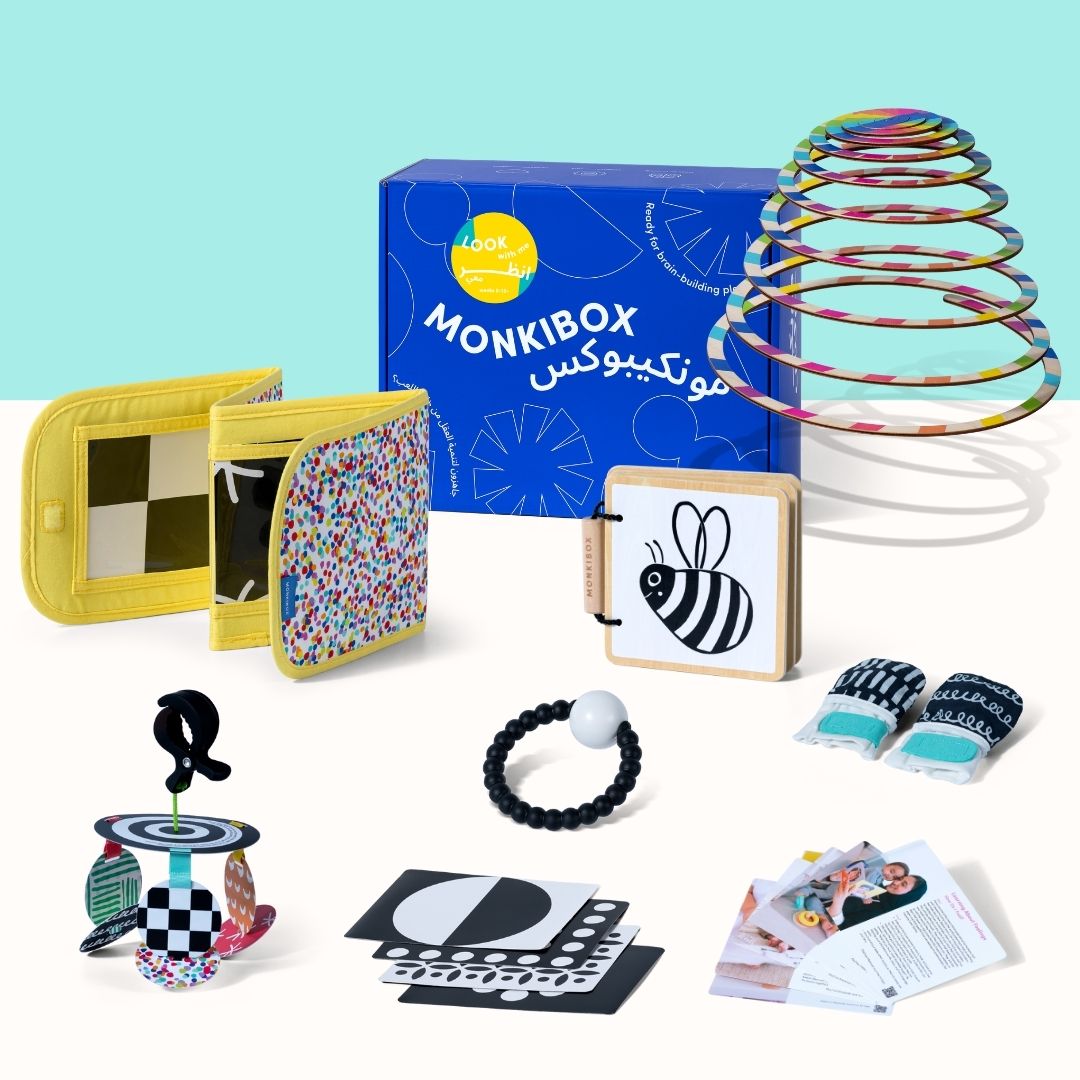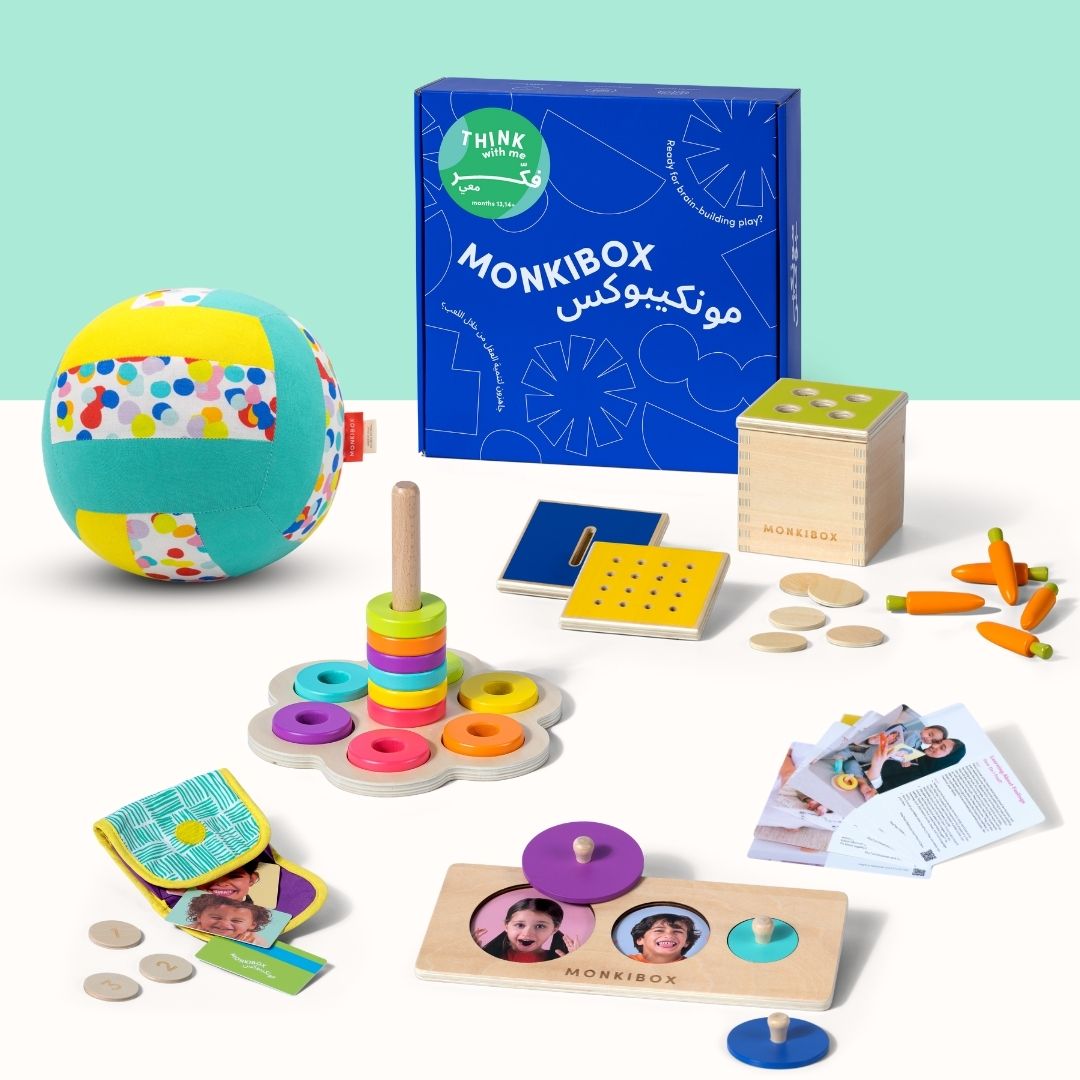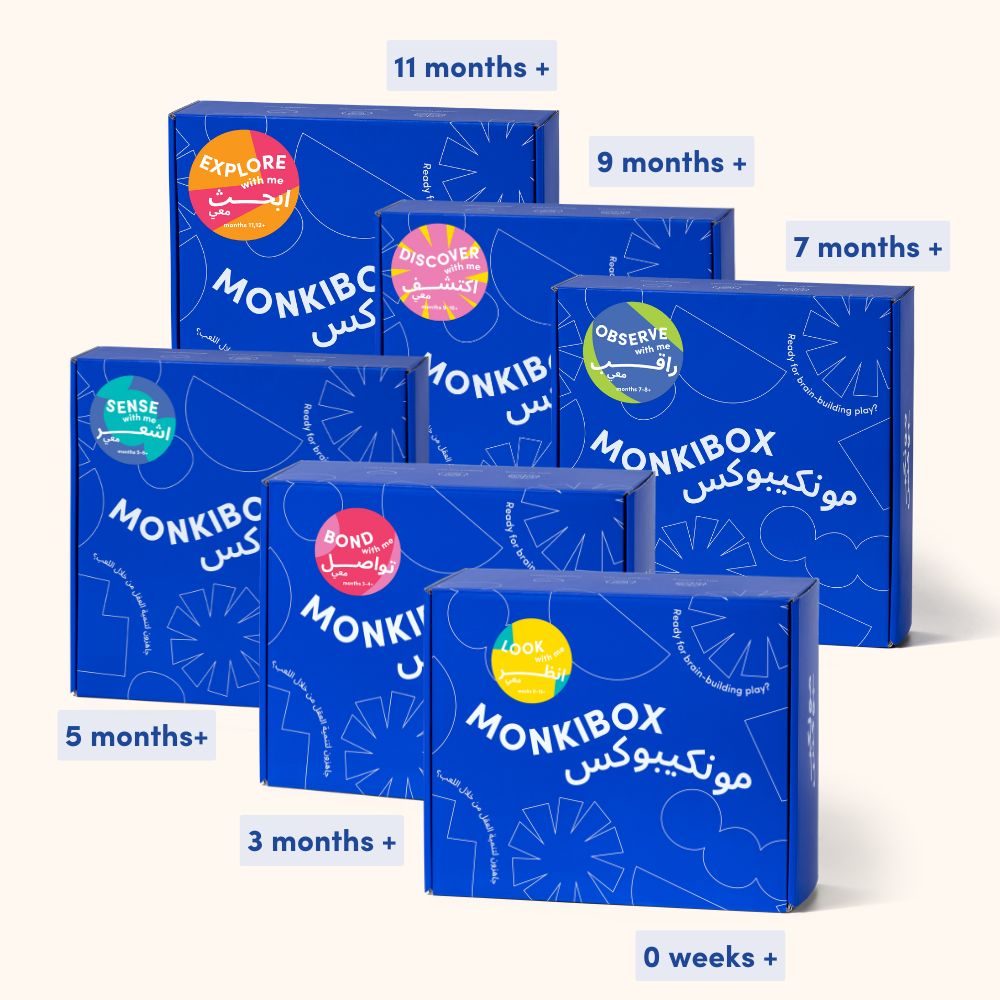Did you know that shortly after birth, your baby can detect shapes and edges, specifically where light meets dark? Luckily for new parents, their little one is naturally drawn to familiar faces. Since newborns can only see 15–30 cm ahead, your face is at the perfect distance for them to study and connect with.
In addition to face-to-face bonding, providing your baby with high-contrast black-and-white images can help exercise their eye muscles, improve focus, and increase attention span. Since their vision remains blurry and color perception is limited until around 3–4 months, experts recommend using simple black-and white visuals within 8 to 12 inches of their eyes. These images send stronger neural signals to the brain, which helps with tracking objects and developing overall visual strength
Here are research-backed benefits of black-and-white images for your baby: - Stimulate underdeveloped optic nerves - Support healthy brain development without overstimulation - Improve visual focus and make tummy time more engaging - Encourage shape recognition, distance estimation, and gross motor coordination - Boost curiosity and memory by sending strong visual signals to the brain - Enhance hand-eye coordination through visual tracking
When should you start? You can introduce high-contrast cards from day one. Color vision typically matures around the fourth or fifth month. Just be sure to hold images within their visual range—about the same distance as your face during feeding.
Ways to incorporate visual stimulation into your routine:
1. Face-to-Face Play
Looking into your baby’s eyes supports visual development. Try making funny faces—your baby will be drawn to features like your lips and eyebrows
2. Tummy Time
It’s perfectly safe to place black-and-white cards in front of your baby during tummy time (1–5 minutes a day is great for newborns). As they grow stronger, these visuals can motivate them to lift their head and neck.
3. Crib or Changing Table Cards
Hang black-and-white visuals on the wall near their crib or changing area. Alternate sides to help them practice looking both ways and prevent flat head syndrome
4. Bold Fashion Dress
your baby in black-and-white mittens for short periods. High-contrast patterns promote hand discovery, which is key for hand control and fine motor skills.
Your baby’s eyes are still learning to work together. Don’t worry if they occasionally appear cross-eyed—it’s completely normal. Pediatric experts suggest starting with basic shapes and curves in the first few months
As your baby’s vision sharpens (around 2–3 months), you can introduce more complex patterns like checkerboards.
If you notice any persistent or significant visual irregularities, consult your pediatrician. For a better understanding of how your baby sees, check out this helpful video demonstration. Try holding an image card and waiting until your baby looks away. When they look back, rotate the card to show the same image in a new direction. Repeat 2–3 times before switching to the next image.
Start your baby’s developmental journey with MonkiBox. Our Montessori-inspired toys are carefully crafted to give your child the best start in life.




